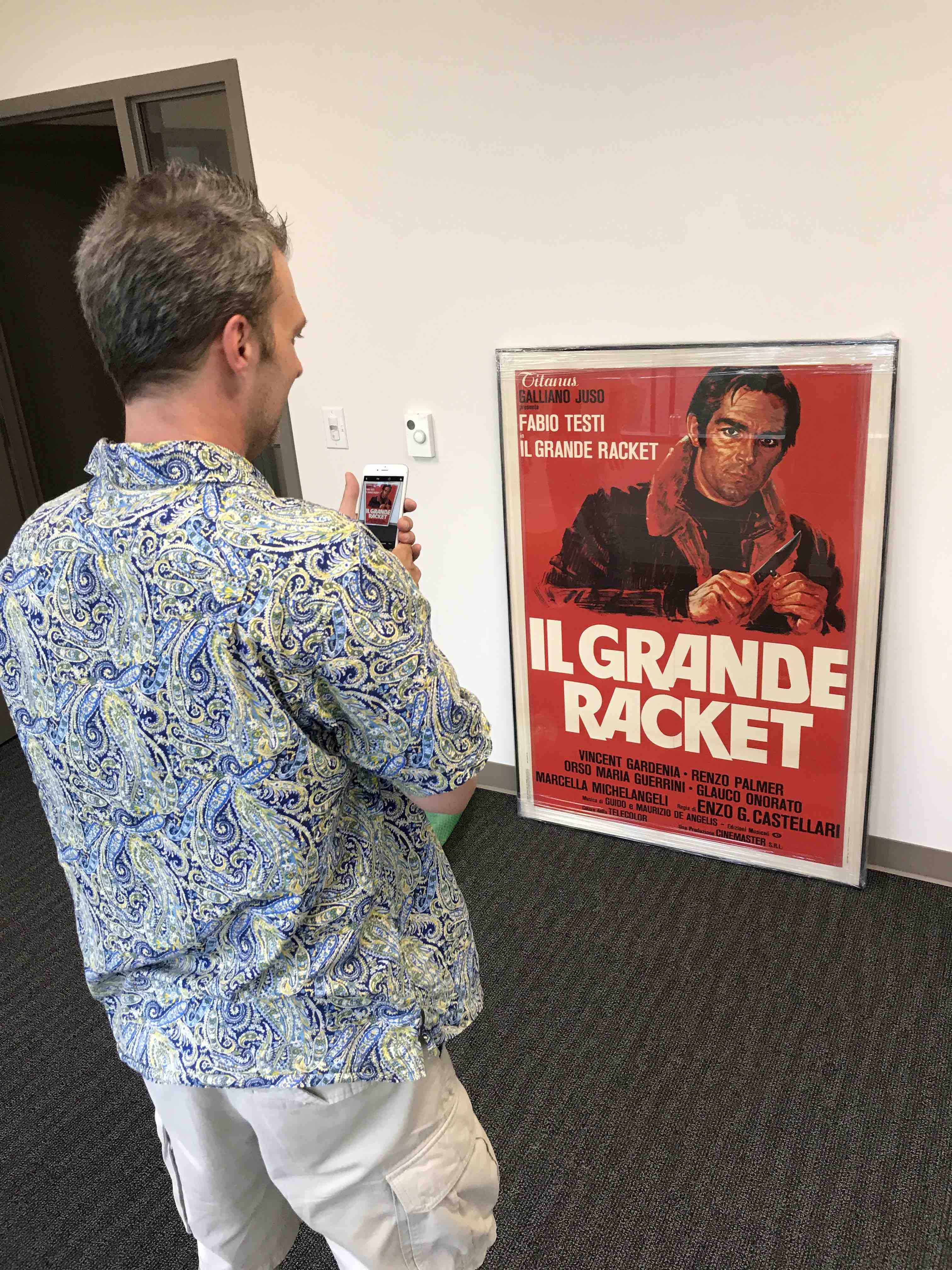 Racket
Racket

#lang racket/gui
(definemy-language 'English)
(definetranslations
#hash([Chinese. "Ngươi hảo thế giới" ]
[English. "Hello world" ]
[French. "Bonjour le monde" ]
[German. "Hallo Welt" ]
[Greek. "Γειά σου, κόσμε" ]
[Portuguese. "Olá mundo" ]
[Spanish. "Hola mundo" ]
[Thai. "สวัสดีชาวโลก" ]
[Turkish. "Merhaba Dünya" ]))(definemy-hello-world
(hash-reftranslations my-language
"hello world" ))(message-box""my-hello-world)
Racket is a mature and stable product. From the beginning, it has supported cross-platform graphical programming (Windows, macOS, Linux).
Racket includes a rich set of libraries, covering the full range from web server apps to mathematics and scientific simulation software.
In Racket, programmers define their own loops withpowerful macros.Indeed, these macros are so powerful that programmers make entiredomain-specific languagesas libraries. No tools, no Makefiles required.
Racket is the first language to supporthigher-order software contractsandsafe gradual typing.Programmers can easily deploy these tools to harden their software.
Racket comes with support for major editors. The main bundle includes an innovative and extensible interactive development environment that has inspired other IDE projects.
#lang racket
(providetime-it)
(require(for-syntaxsyntax/parse))
(define-syntax(time-it stx)
(syntax-parsestx
[(_ task)
#'(thunk-time-it (λ() task))]))(define(thunk-time-it task)
(definebefore (cim))
(defineanswer (task))
(definedelta (- (cim) before))
(printf"time: ~a ms\n" delta)
answer)(definecim current-inexact-milliseconds)
Racket allows programmers toadd new syntactic constructsin the same way that other languages permit the formulation of procedures, methods, or classes. All you need to do is formulate a simple rule that rewrites a custom syntax to a Racket expression or definition.
Little macros can particularly help programmers with DRY where other features can’t. The example
#lang racket/gui
;; let's play a guessing game
(defineframe (newframe%[label "Guess" ]))
(definesecret (random5))
(define((check i) btn evt)
(definefound? (if(=i secret) "Yes" "No" ))
(message-box"?"found?)
(when(=i secret)
(sendframe show #false)))(for([i (in-range5)])
(newbutton%
[label (~ai)]
[parent frame]
[callback (check i)]))(sendframe show #t)
Racket comes with a comprehensive suite of libraries:a cross-platform GUI toolbox,aweb server,and more.Thousands of additional packagesare asingle commandaway: 3D graphics, a bluetooth socket connector, color maps, data structures, educational software, games, a quantum-random number generator, scientific simulations, web script testing, and many more.
Macros work with these tools. The example
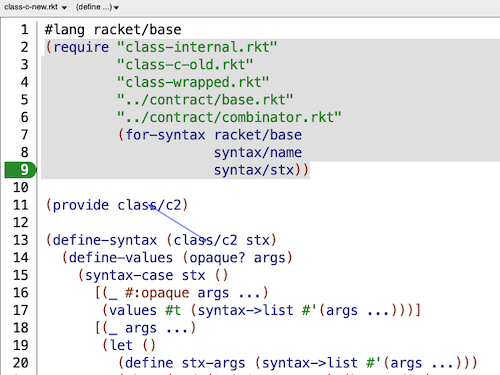
Getting to know the full Racket macro system will feel liberating, empowering, dazzling—like a whole new level of enlightenment. Developers can easily create a collection of co-operating macros to implementalgebraic pattern matching,simpleevent-handling,or alogic-constraint solver.
While Racket is a functional language, it has offered a sub-language ofclasses and objects, mixins and traits,from the beginning. The macro-based implementation of a Java-like class system lives in a library and does not need any support from the core language. A Racket programmer can thus combine functional with object-oriented components as needed.

Some languages convey ideas more easily than others. And some programming languages convey solutions better than others. Therefore Racket is a language formaking languages,so that a programmer can write every module in a well-suited language.
Oftenan application domaincomes with several languages. When you need a new language, you make it—on the fly. Open an IDE window; create a language right there, with just a few keystrokes; and run a module in this new language in a second IDE window. Making new languages really requires no setup, no project files, no external tools, no nothing.
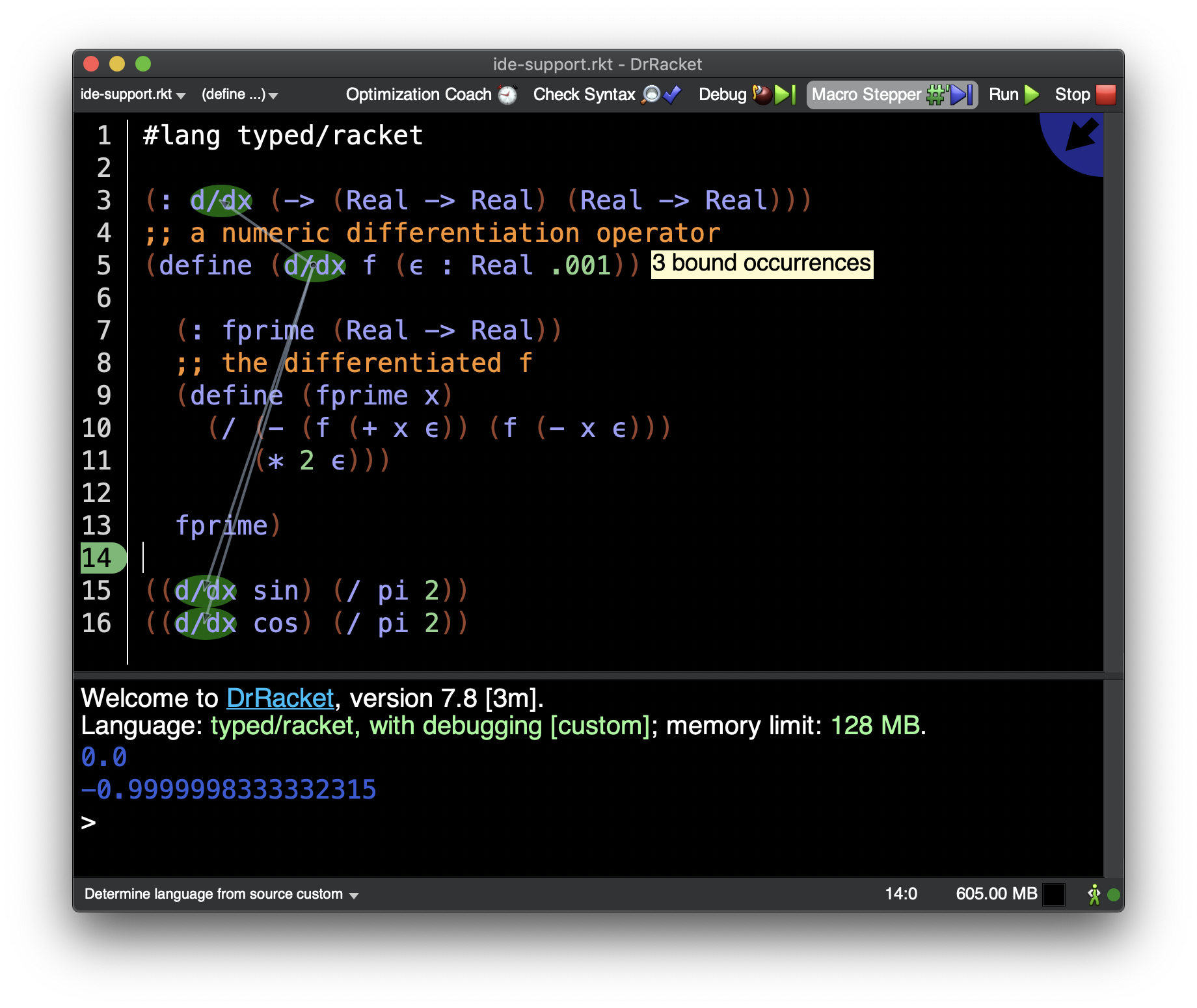
Racket comes with its own IDE,DrRacket(née DrScheme), and it sports some unique features. For example, when a programmer mouses over an identifier, the IDE draws an arrow back to where it was defined.
A programmer immediately benefits from DrRacket while using an alternative language, sayTyped Racket.Racket macros, even complex ones and those used to make new languages, record and propagate a sufficient amount of source information for DrRacket to act as if it understood the features of the new language.
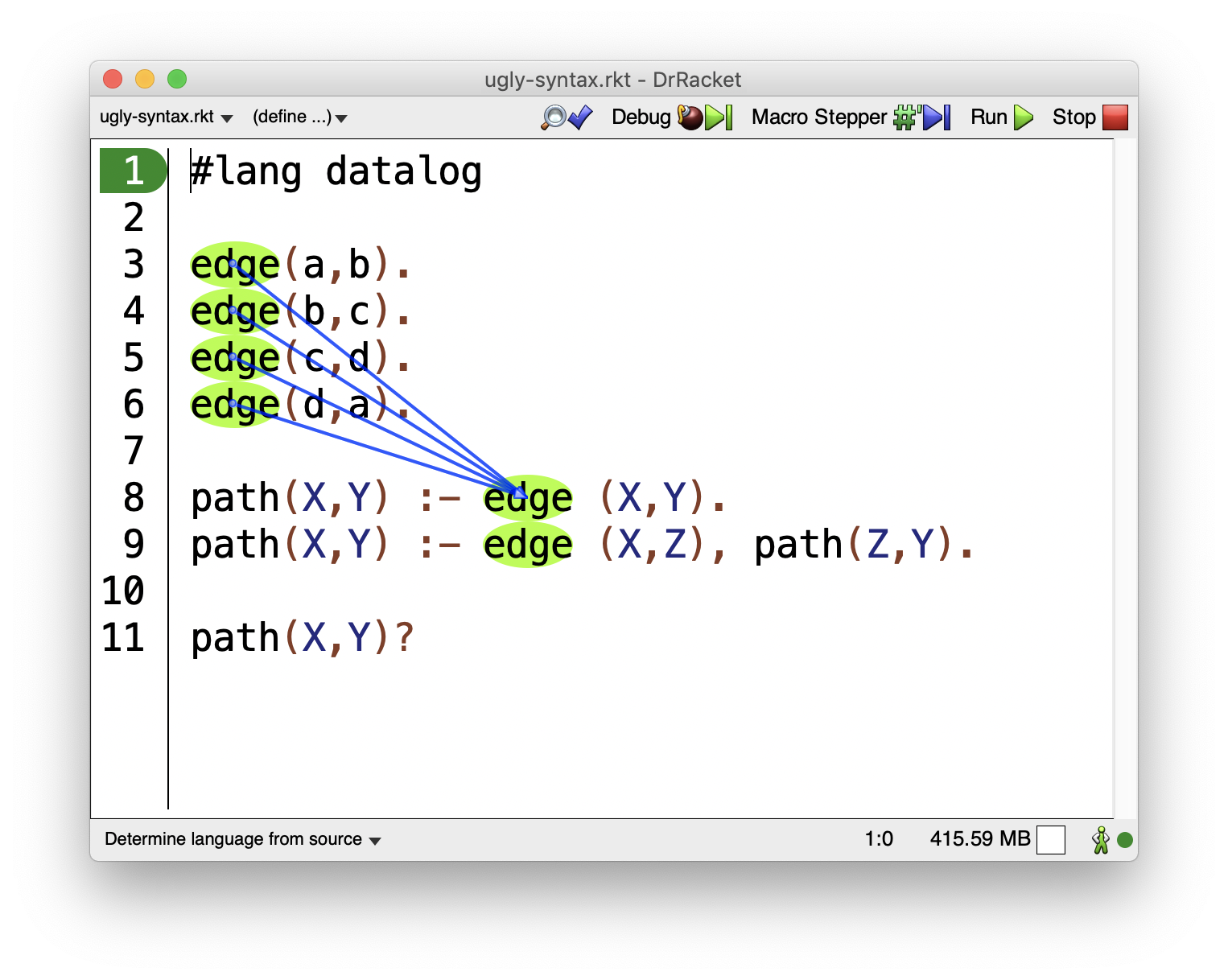
Racket programmers usually love parentheses, but they have empathy for those who need commas and braces. Hence, building languages with conventional surface syntax, like that ofdatalog,is almost as easy as building parenthetical languages.
Racket’s ecosystem comes withparsing packagesthat allow developers to easily map any syntax to a parenthesized language, which is then compiled to ordinary Racket with the help of Racket’s macro system. Such a language can also exploit the hooks of the IDE framework, so that its programmers may take advantage of Racket’s IDE.
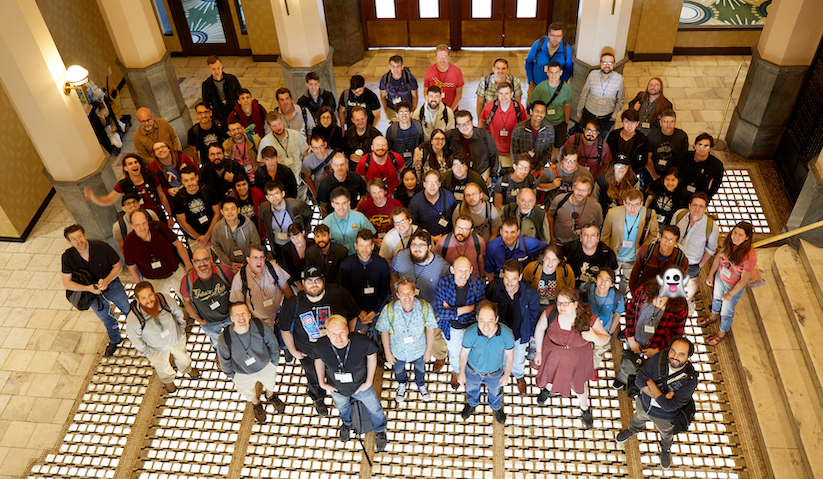
Community DiscourseandDiscord Slack(sign up),Reddit,andMailing lists Mastodon,Twitter,andBlog WikiandYouTube TeamandContributing Friendly Environment Policy Software Freedom Conservancy | 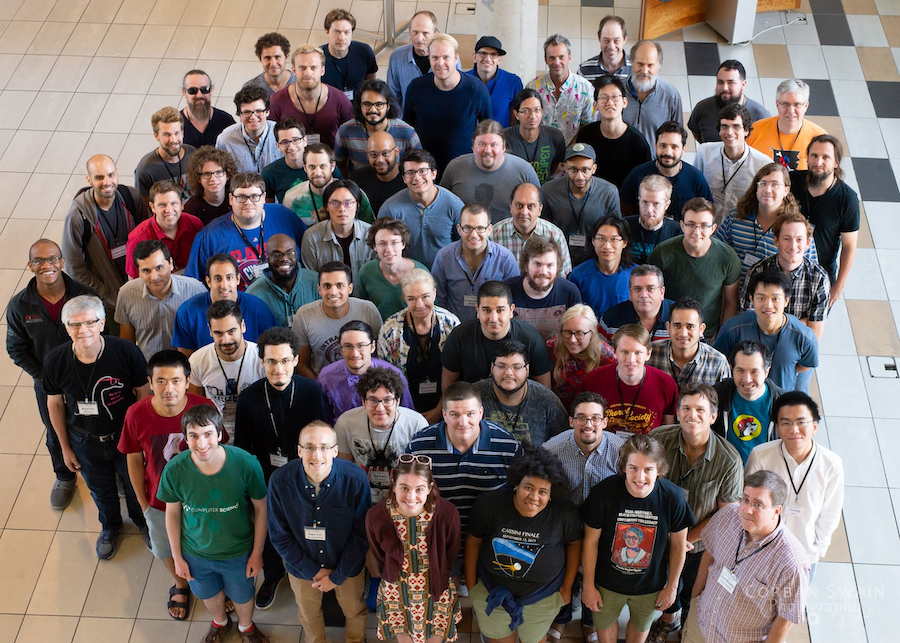 |
Books The Racket Guide Realm of Racket Beautiful Racket Server: Racket |  |
Education The Racket Summer School Program by Design (aka TeachScheme!) Bootstrap |  |
Swag Racket T-Shirts— the perfect way to meet friends, influence people, and stay warm. Racket Stickers— the indispensable accessory for laptops and textbooks. |  |
DARPA,
theFund for the Improvement of Postsecondary Education (FIPSE)at theUS Department of Education,
theExxon Foundation,
CORD, partners of the Academy of Information Technology,
Microsoft,
Mozilla,
Google,
and manyindividuals
for their generous support over the years.
